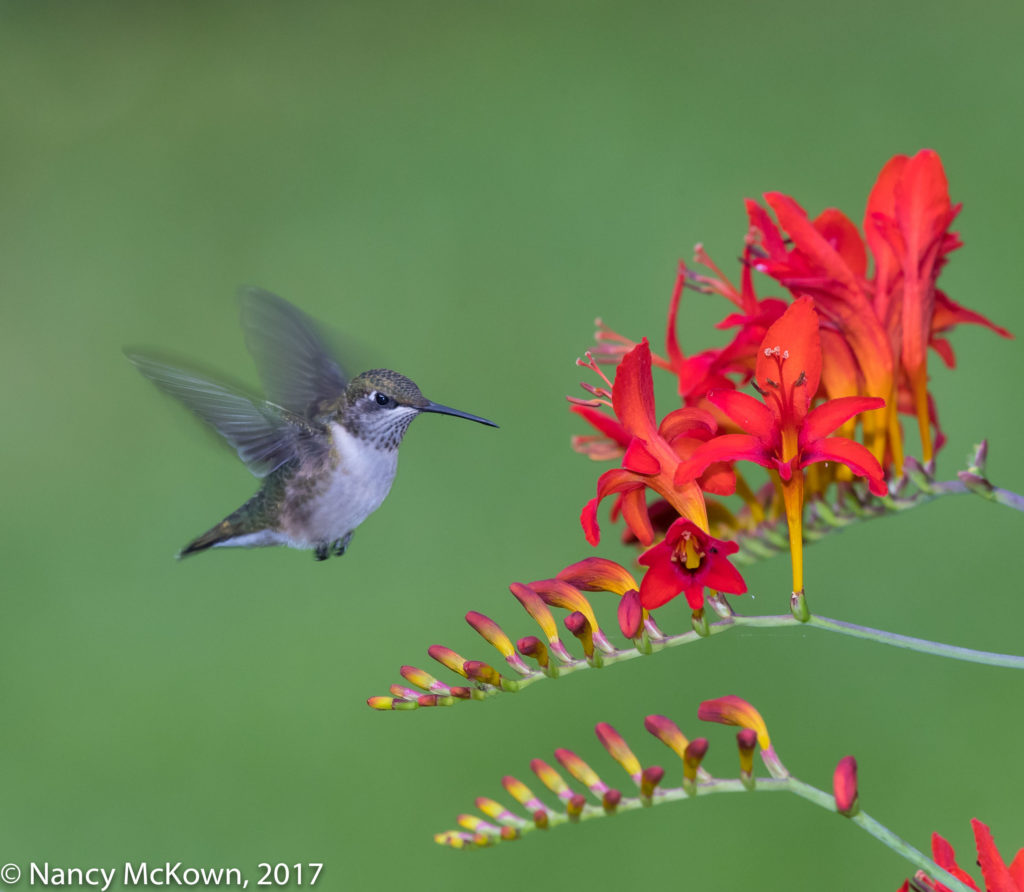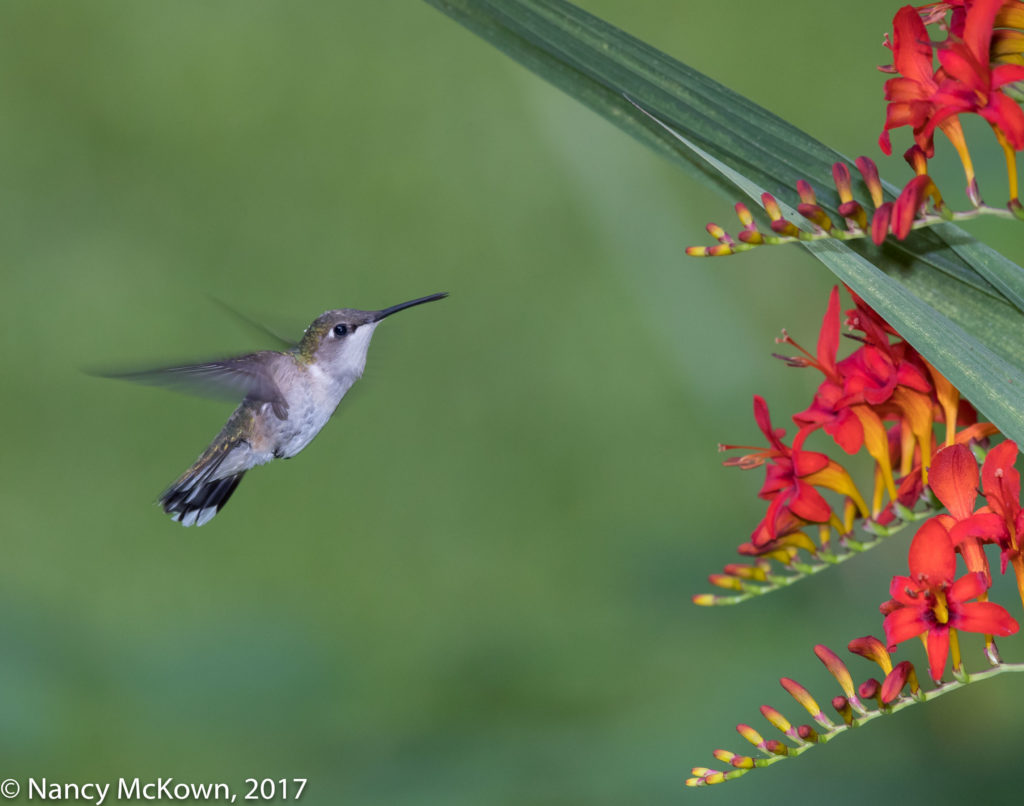Photographing Ruby Throated Hummers Near The Crocosmia
The Crocosmia (Lucifer) flowers…with their arching stems and bright green pleated blade-like leaves are showy and exotic-looking right now. The Hummingbirds are buzzing in and out, attracted to the intense scarlet red of the tubular flowers.
The flower clusters sport lots of blossoms which poke out every which way. Some of the blooming and almost blooming flowers reach out above the 3′ high stems, affording one or two places where the camera’s lens could isolate the delicate petals from the busyness of foliage.
My goal: Set up the camera on the front porch, approximately 14-16 feet from the Crocosmia and try to capture an uncluttered image of a hummer very near, but not drinking from the flowers.

With Fill Flash
ISO1000; f/9; 1/250 Second
Judicious Cropping
This grand Lucifer patch is too lovely to prune so I have to manipulate the camera rig in to just the right position, and perhaps gingerly fold or tuck a few of the stems to one side or the other. (NOTE: Most of the judicious cropping will have to be done in post processing.)
Hummingbirds appear confident and fearless once they get used to you. My plan required that the hummers cooperate by choosing one of the designated patches of flowers upon which to drink and pose. After only a day, this little one zoomed in close to my face, chittering away as she looked me over. She then proceeded with her nectar drinking routine..sip-back away-hover-look around-repeat.
Flash or No Flash
The morning light was filtered by the fully leafed-out tall trees above and around the house. As I set up, I noticed that the wind appeared uncertain about its direction and intensity. The hummers didn’t seem to care, but an unexpected gust would certainly impact my efforts to achieve image clarity.
To stop wing motion on a hummer (without flash), I have had to set the shutter speed to as high as 1/6400 second. (NOTE: Think about how fast that is! I remember when the shutter speed on a couple of my old cameras did not go above 1/1000 second.) Setting the shutter speed that high in our sun filtered yard would send the ISO soaring to unacceptable levels. I attached the flash.
Stopping wing motion with flash requires that I set the exposure parameters to shoot with little or no ambient light. With the flash attached, the shutter is synced at 1/250 second or slower. The more I tightened the aperture, the less the ambient light creeped in – the darker the background became. It would then be up to the synced, instantaneous and powerful flash burst to not only illuminate, but freeze all movement.

With Fill Flash.
ISO1000; f/9; 1/250 Second
More Ambient, Less Flash
I have to choose between freezing the hummer’s wing motion or maintaining a more natural look. An exposure conundrum because I can’t have both. The more ambient light I let in, the more natural the image looks, and the more impossible it becomes for the flash to freeze the wing action. This is especially true if the overall ambient light illuminating the flower and bird scene meters out to be very similar to the exposure settings required for the background.
For this shoot, I raised the ISO settings in order to let the ambient light on the scene dominate exposure settings more. This strategy helped reduce the impact of the flash blast on the subject, creating a better balance of light.
Ultimately, I liked the look of ambient light more than I liked the look of tack sharp wing feathers. I chose to set the exposure parameters so that ambient light dominated and the flash provided only fill light.









beautiful!